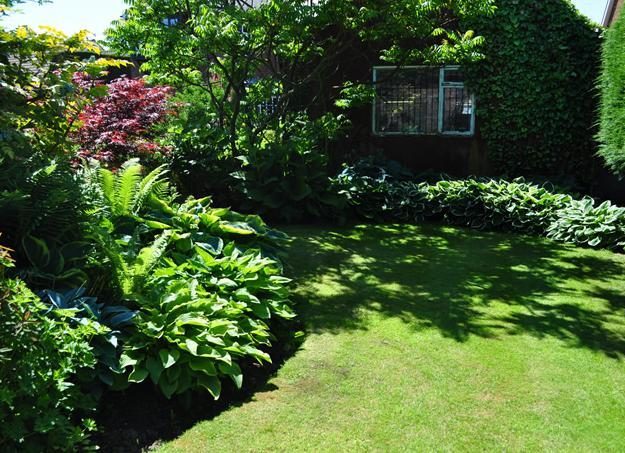You can hear the phrase from some homeowners – “I have too much shade, I can’t grow anything in my garden!”. In this article, we will describe some recommendations for landscaping your yard, even if it is in the shade for most of the day.
The most common plants in shade gardens are hostas, ferns, and yew shrubs. Shade plants, especially native species suitable for local conditions, are one of the most optimal choices. Shade plants often have thin leaves with a large surface area. Thus, they are anatomically adapted for efficient photosynthesis in low light.

While every plant needs light to grow and thrive, the amount of sunlight needed can vary. Under certain lighting conditions, plants can grow almost anywhere! Remember the sacred axiom of gardening – “A certain plant, a certain place.”
During landscape design, landscape design specialists from the Zeleny Dvir garden center conduct research on each site. We create a three-dimensional visualization of light patterns throughout the year. This helps in plant selection along with conditions such as soil quality, water quality, wind rose quality and interaction with insects. When choosing plants for the plot, the homeowner should also consider the type of lighting that is present in the garden during the day and throughout the growing season.

Overview of lighting conditions in the garden.
First, determine whether the area being considered is part sun or part shade? Partly sunny means that the amount of sunlight lasts between 4-6 hours per day. Partly shaded means that the amount of sunlight lasts for 2-4 hours of sun per day.
Shade by definition is a lack of sunlight, but in horticulture it means less than two hours of sunlight per day.
Light-shaded areas receive partially filtered sun, such as that found under open canopy trees such as honeydew and birch, where there is a constant movement of sun and shade. Look for it under trees with tall branches or sparse foliage. You may see a light shade called mottled or discontinuous shade.

Shady garden design
Trees, shrubs, and perennials bloom for only a few weeks, but the leaves remain for the entire season. The solution is to focus on designing with leaf shape, leaf color, height, plant texture for planting. Although many flowers bloom in the spring and early summer, why not also plant plants that bloom at other times of the year. A perennial groundcover (Heichera ‘Autumn Bride’ blooms in the fall, as does the sedge. The sedge is an ideal plant for small garden design! In tiny gardens or small yards, consider plants whose plant form is more architecturally vertical, so that , rather than wider.Except Also, green is not the only color for leaves! Try varieties with purple or burgundy color in their leaves.
You can contact us for gardening and landscape design, and also visit our garden center store Mon-Sun from 8:30 a.m. to 6:00 p.m.

